Dear Readers,
After a brief respite, we’re now moving into Part 3A (which is actually part 4) of my 3- (actually 5-) part series on diagnosing short circuits. (Blame George Lucas and “Star Wars” for the numbering confusion). Today we’ll focus on troubleshooting short circuits on dead (unpowered) 120-volts AC RV electrical systems, and the next installment, Part 3B (which is actually part 5), will cover how to troubleshoot live 120-volt AC systems.
Reading a schematic
If you want to get good at diagnosing short circuits, at some point you’re going to need to learn the basics of reading a schematic and predicting what you should read with a digital meter at various test points. There’s just no other good way to do this, so we’ll start with a simple example this week and show you the basics.
Here’s a simplified schematic of what the AC power distribution looks like in a typical 50-amp shore power RV. Note that there’s likely some kind of 4-wire inlet on the side of your RV. I’m showing a SmartPlug for clarity, but you probably have a twist-lock inlet installed in your own RV. More on that later.
In any event, you can see that there are Hot-1, Hot-2, Neutral, and Ground connections coming into your RV. This first test must be done with all power turned off, but let’s see what brought us to the short circuit issue. I’m going to posit the scenario where the 50-amp double circuit breaker in your RV’s power distribution panel keeps tripping as soon as shore power is applied. Now this is a 50-amp double circuit breaker that’s going to trip both sides even if the problem is only on one of the legs. But how to figure out which leg? Well, enter the ohm meter.
SAFETY FIRST: NEVER CONNECT AN OHMMETER TO A LIVE CIRCUIT
BEFORE CONNECTING YOUR OHMMETER TEST LEADS, MAKE SURE ALL ELECTRICITY IS OFF AND YOUR RV IS UNPLUGGED FROM SHORE POWER!
TURN OFF YOUR ONBOARD GENERATOR OR INVERTER TO AVOID THE POSSIBILITY OF BACKFEEDING VOLTAGE TO THE INLET CONNECTOR!
BEFORE TESTING WITH AN OHMMETER, CHECK THE SHORE POWER INLET ON YOUR RV FOR AC VOLTAGE!
First let’s turn off all of the 15- and 20-amp breakers in your RV’s power panel to isolate those gadgets that can fool this test. Only the main 50-amp breaker in your RV should be on, and you have to be completely disconnected from any AC power. And, of course, your shore power cord is disconnected from the side of your RV so you can access the contacts in the inlet directly.
Now, in this SmartPlug inlet you can see that the Neutral contact is at the top, the Ground contact is at the bottom, and the left contact is Hot-1, plus the right contact is Hot-2. To separate out the two Hots and identify which one is tripping both poles of the circuit breaker, all we have to do is measure the resistance between the Neutral contact and each Hot-Leg contact.
So set your meter to its lowest ohm scale (usually 200 ohms) and touch your test leads first between Hot-1 and Neutral, as I’ve done in this picture (above). In this case the meter is indicating OL for Over-Load, which simply means the resistance is above 200 ohms. And that means the short circuit isn’t on that side of the 2-pole breaker.
Next, meter between Hot-2 and the Neutral and measure the ohms. In this case we’re now reading 00.6 ohms, which is very close to a dead short (called continuity), and that’s what’s causing the main 50-amp circuit breaker to trip whenever shore power is applied.
It doesn’t measure an actual zero (00.0) ohms because everything from your meter leads to even those heavy wires inside of your RV contribute a small amount of resistance. So we’ll consider anything under 1 ohm to be continuity, or a direct short circuit.
Since you’ve got continuity on the Hot-2 side, you can eliminate all of the wiring connected to the Hot-1 side of your electrical system. Also, many meters have a diode-test/continuity function which will beep or buzz as long as there’s continuity (a short circuit). So you can use alligator clips on your meter leads and let the meter stay out near the inlet plug while you start tugging and wiggling any wires inside you can access while listening for the beep to stop. If the beep comes and goes when you wiggle a wire or outlet a particular way then you’ve found the Hot to Neutral short.
That was a little too easy…
But let’s make this a little more complicated and find that there’s no short (continuity) between Hot-1 and Neutral, or Hot-2 and Neutral. What does that suggest? Well, as you can see in the schematic, the incoming Ground and Neutral wires are isolated from each other (which you can prove by metering between the Neutral and Ground contacts on your inlet), then you must have a Hot-1 or Hot-2 to Ground short somewhere. Prove it by metering between the Ground contact and Hot-1 or Hot-2. If you find that one of them shows a continuity reading (less than 1 ohm), then that’s the culprit.
Complications
But what if you’re not tripping the main circuit breaker, but instead one or more of the 20-amp breakers is tripping? Then disconnect or shut off everything plugged into the outlet on a circuit breaker, then meter between the incoming Hot-1 and Neutral, then Hot-2 and Neutral, while someone flips on each of the 15-or 25-amp circuit breakers one at a time. Remember, there must be no AC power applied for this test – you’re only using the ohms scale on the meter so it’s safe to touch these wires with your hands. That won’t be the case next week when we do live AC testing.
What you should see is the meter indicate continuity when the problem circuit breaker is turned on, and go to high-ohm Over-Load mode when the offending breaker is off. Once that happens you can put the ohm meter in continuity beep/buzz mode then start twisting and flexing wires one at a time until the ohm meter beeping stops.
Do you see what I see?
Now this could easily be a wire pinched next to the metal frame inside of the wall, or even a screw/nail through a wire, so you may need a Borescope camera to find it. I have a stupid-expensive medical Borescope that can poke into an artery and be threaded into your heart, but you can get a basic scope that will fit in a 1/4″ or 1/2″ access hole for less than $75. And many of them will connect to your smartphone so you can record a video of the inspection – which is very cool.
This gadget will allow you to see right inside of the walls (after drilling a small inspection hole), and find the problem wire that’s shorting out somewhere. Again, if you read continuity between Hot-1 or Hot-2 and Neutral, then it’s a line-to-neutral short circuit. But if you read continuity between Hot-1 or Hot-2 and the Ground contact, then the short circuit is between one of the 15-or 20-amp wires and the chassis of the RV. After you find the problem area it’s basically a blacksmithing problem where you cut a small access hole in the wall and repair the shorted wire.
More on borescopes and conductor splicing later
But much more on picking borescopes and repairing wires next time when we dive into short circuit testing with the power on. See you then.
In the meantime, let’s play safe out there…. Mike




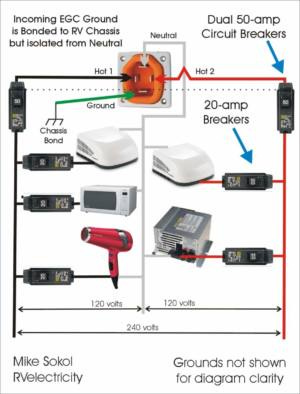
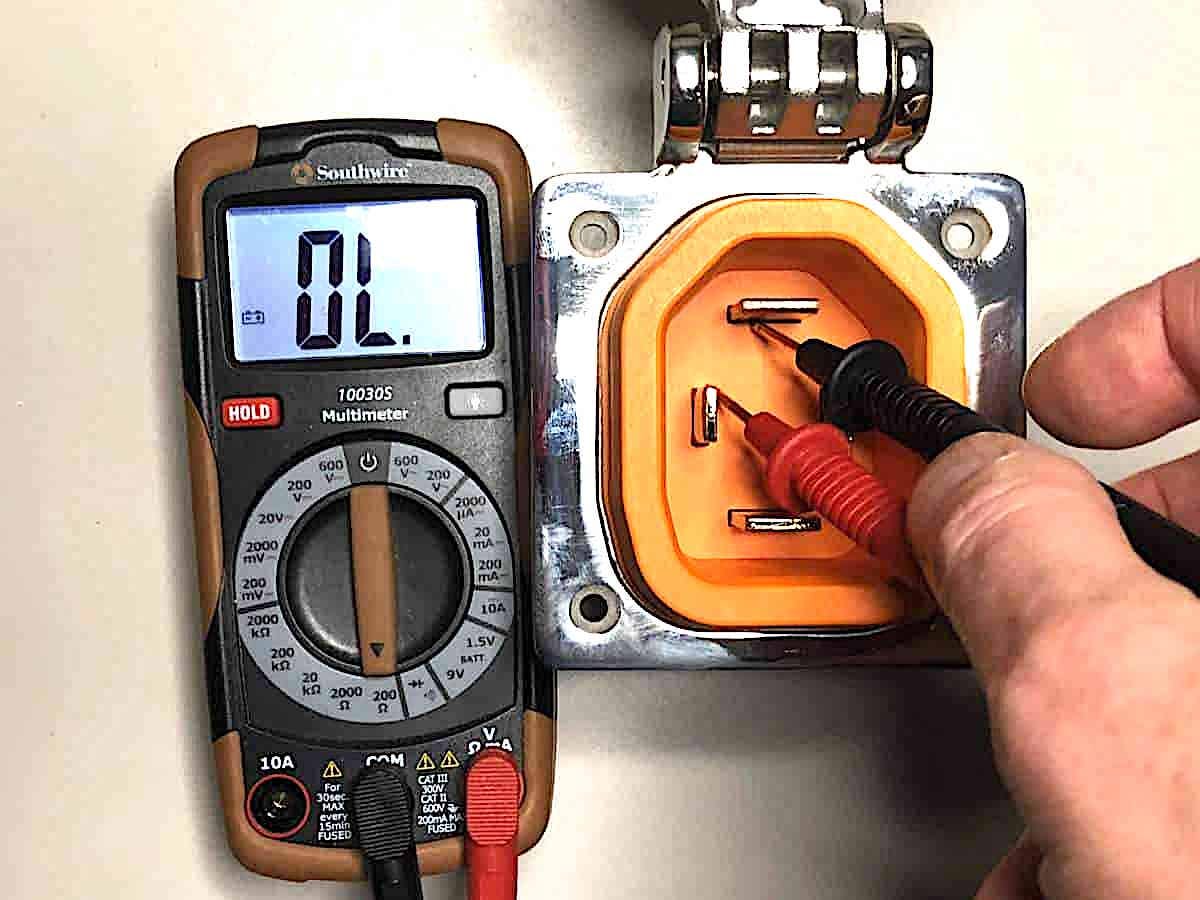
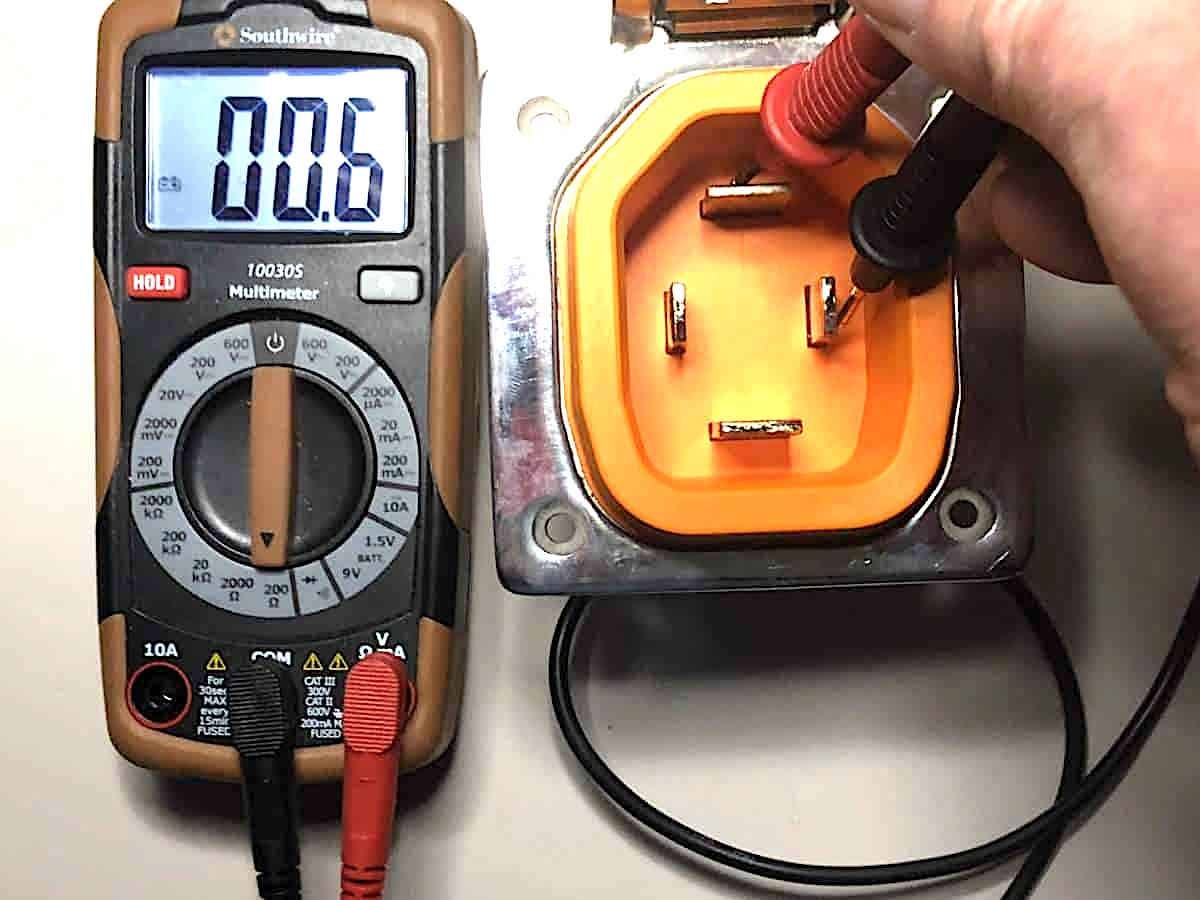
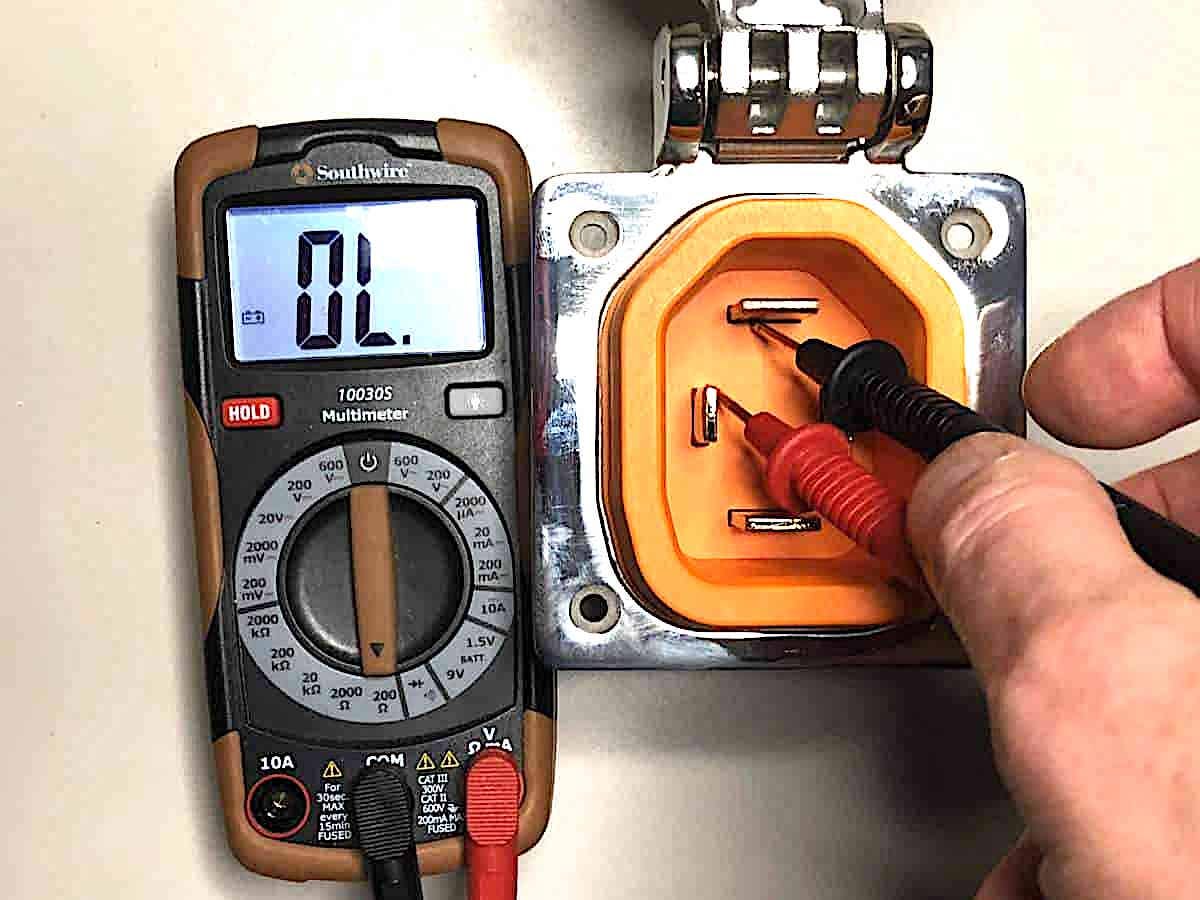

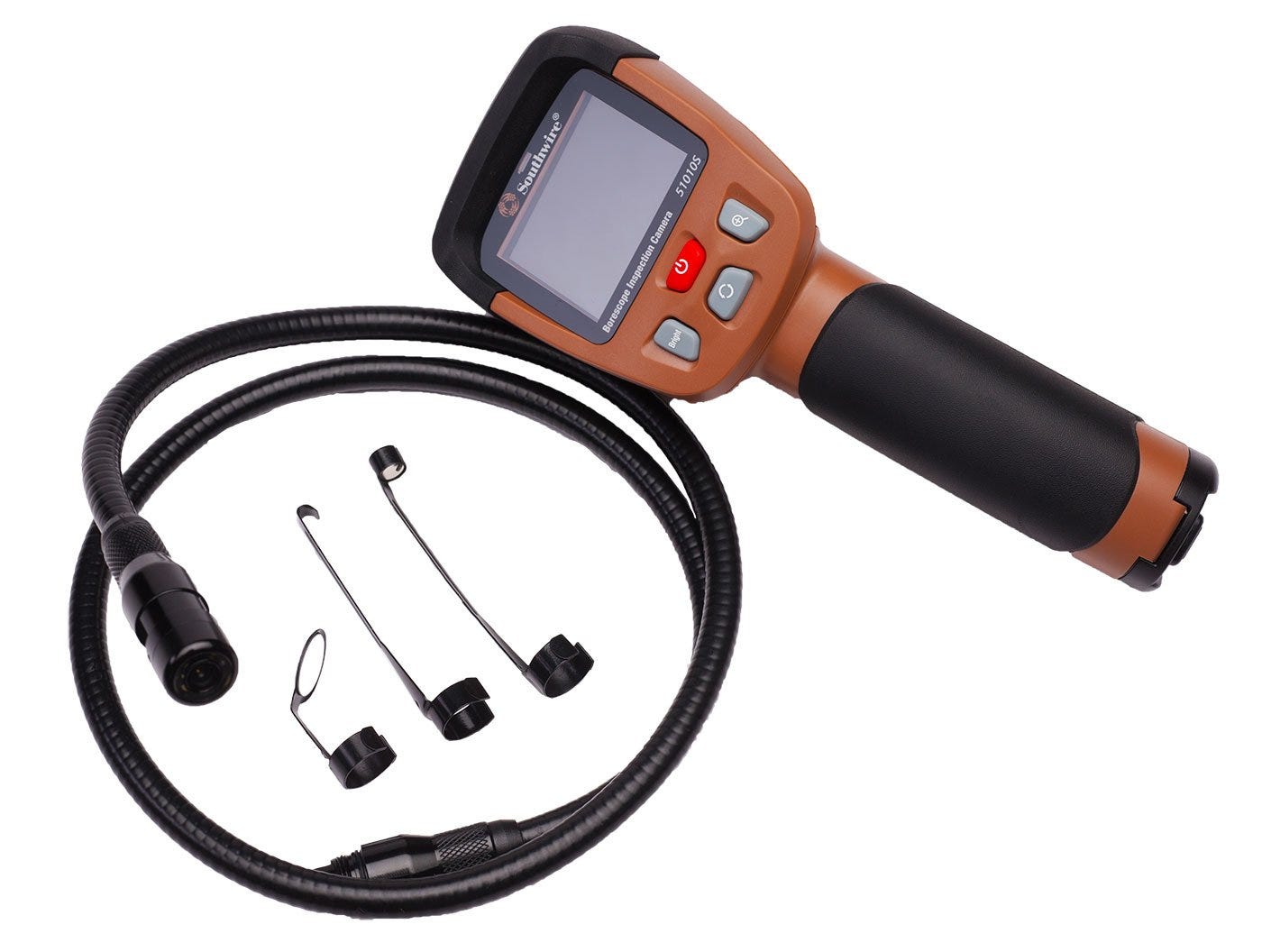

Yes, that’s possible…
Great idea!